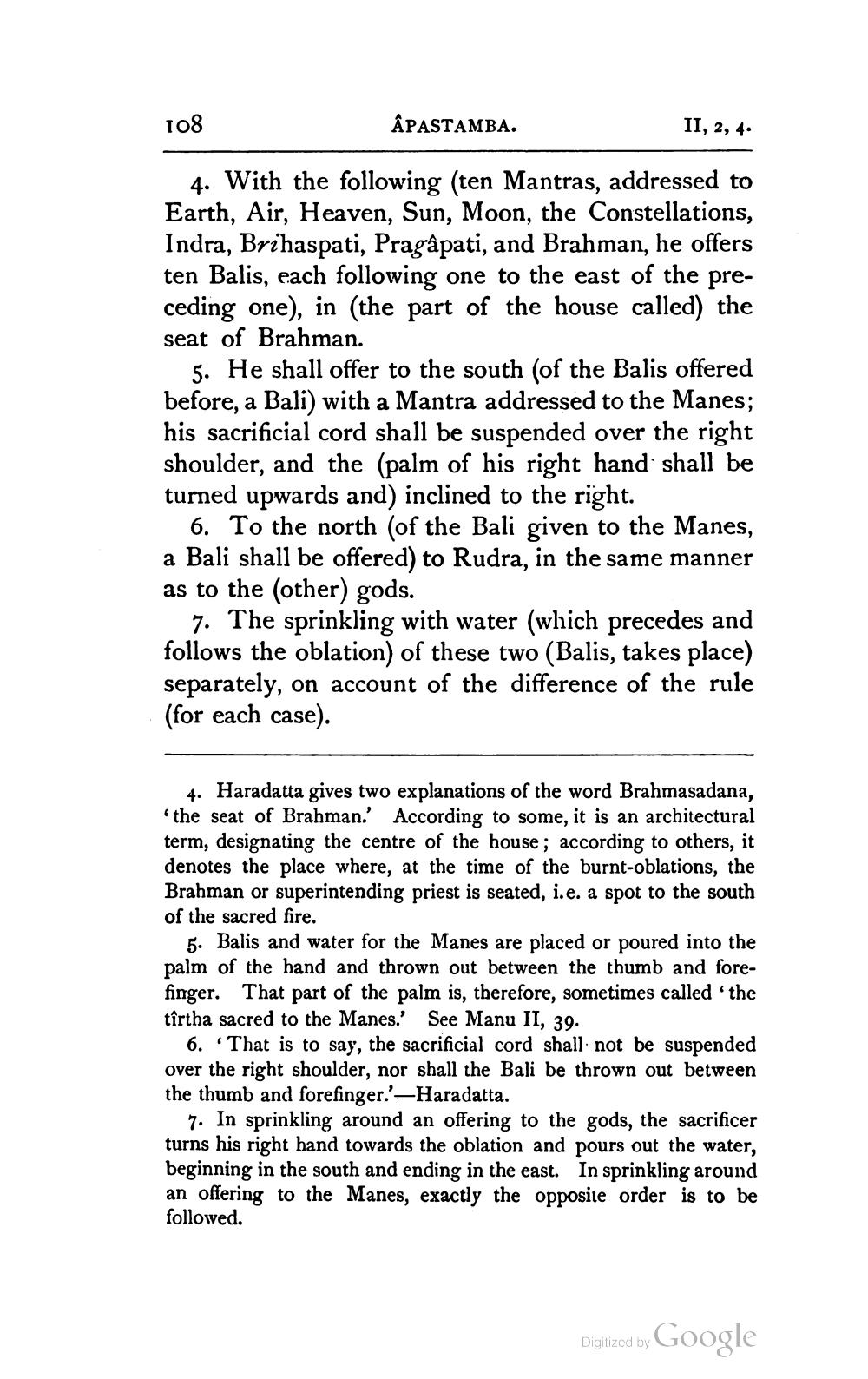________________
ÂPASTAMBA.
4. With the following (ten Mantras, addressed to Earth, Air, Heaven, Sun, Moon, the Constellations, Indra, Brihaspati, Pragâpati, and Brahman, he offers ten Balis, each following one to the east of the preceding one), in (the part of the house called) the seat of Brahman.
108
II, 2, 4.
5. He shall offer to the south (of the Balis offered before, a Bali) with a Mantra addressed to the Manes; his sacrificial cord shall be suspended over the right shoulder, and the (palm of his right hand shall be turned upwards and) inclined to the right.
6. To the north (of the Bali given to the Manes, a Bali shall be offered) to Rudra, in the same manner as to the (other) gods.
7. The sprinkling with water (which precedes and follows the oblation) of these two (Balis, takes place) separately, on account of the difference of the rule (for each case).
4. Haradatta gives two explanations of the word Brahmasadana, 'the seat of Brahman.' According to some, it is an architectural term, designating the centre of the house; according to others, it denotes the place where, at the time of the burnt-oblations, the Brahman or superintending priest is seated, i. e. a spot to the south of the sacred fire.
5. Balis and water for the Manes are placed or poured into the palm of the hand and thrown out between the thumb and forefinger. That part of the palm is, therefore, sometimes called 'the tîrtha sacred to the Manes.' See Manu II, 39.
6. That is to say, the sacrificial cord shall not be suspended over the right shoulder, nor shall the Bali be thrown out between the thumb and forefinger.'-Haradatta.
7. In sprinkling around an offering to the gods, the sacrificer turns his right hand towards the oblation and pours out the water, beginning in the south and ending in the east. In sprinkling around an offering to the Manes, exactly the opposite order is to be followed.
Digitized by
Google




